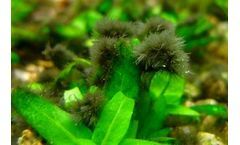Refine by
Water Quality Articles & Analysis
41 articles found
Cyanotoxins are toxic substances produced by cyanobacteria, or blue-green algae, which can proliferate in water bodies under conditions like high nutrient levels and warm temperatures. There are over 1,118 different cyanotoxins identified globally in freshwater environments across 66 countries, illustrating the widespread nature of this ...
Modifications in soil DTSC-SL values for specific compounds resulting from changes in USEPA’s chemical-parameter values and toxicity criteria. Updated values for tap water and ambient air DTSC-SLs based on changes in toxicity criteria. ...
Effective hand hygiene reduces the risk of meat contamination and the transmission of foodborne disease Clean hands are essential to health and effective handwashing is one of the simplest ways to prevent the spread of germs. Hand hygiene is particularly important in minimizing food safety risks along food animal chains, as there are many diseases that can be transmitted to humans from polluted ...
Commercial aquariums are carefully designed ecosystems that showcase the beauty of underwater life while utilizing science and technology to maintain the well-being of aquatic residents. Ozone is crucial in enhancing water quality and supporting the Life Support Systems (LSS). The Ozone Advantage: Revolutionizing Water Quality ...
Maryland’s Department of Health and Mental Hygiene (DHMH) aims to promote and improve the health and safety of all Marylanders through disease prevention, access to care, quality management and community engagement. Public Health Services is a division of Maryland’s DHMH. Recently, the Maryland Public Health Services Laboratory moved into a six-story laboratory facility, designed to ...
To provide access to clean, microbe-free, mineral-enriched potable water to children (patients), doctors and researcher in a water-scarce location, and eliminate dependence on canned water with questionable water ...
An example of this is in determining microbial communities that contribute to soil enrichment in order to select the best soil type for agricultural application depending on the crop to be planted. rRNA gene amplicons show their potential in analyzing water quality by identifying dominant microbial groups present in the water at a particular time ...
The swift spread of the Coronavirus disease (COVID-19) across the globe has resulted in unexpected and at times, under planned for, impacts. In some countries, the outbreak has moved businesses to halt on-site operations and urged employees to work from home. The water industry, however, is quickly adapting to the new reality and leveraging remote capabilities to continue supplying clean and safe ...
Introduction “Our priority is to provide our customers with the high purity water and steam that is critical to the development and manufacturing of life-saving medications now and for future generations.” —George Gsell, MECO President Nexus Pharmaceuticals, maker of difficult-to-manufacture, high quality, FDA-approved specialty and generic ...
Capacity: 500tons/day Leachate Influent water quality: SS<=500mg/L, pH 6-9, Temperature 20-40, CODcr<=15000mg/L, BOD5<=5000mg/L, NH3-N<=1800mg/L, TN<=2200mg/L, Total hardness(as CaCO3)<=1500mg/L, Total Alkalinity(as CaCO3) <=10000mg/L, SiO2<=50mg/L 15000us/cm<conductivity<=20000us/cm, recovery rate 70-75% ...
Capacity: 600tons/day Influent water quality: CODcr<=20000mg/L, NH3-N<=2000mg/L, SS<=800mg/L, Total Hardness(as CaCO3)<=1200mg/L, Total alkalinity(as CaCO3)<=8000mg/L, SiO2<=50mg/L, pH 6-9, temperature 20-37degree Celsius 15000us/cm<conductivity<=20000us/cm, recovery rate 70-75% 20000us/cm<conductivity<=25000us/cm, recovery ...
Pharmaceutical wastewater is discharged intermittently, and the water quality and volume fluctuate greatly. Pharmaceutical sludge refers to the precipitation material produced in the pharmaceutical wastewater treatment process. ...
This is where we can highlight the human cost of poor health systems when having to respond to any kind of crisis—whether it is COVID 19, the ongoing impact of climate change on health, or other factors such as the lack of basic water, sanitation and hygiene services than can weaken healthcare. Population groups already struggling with poverty, marginalization, air and ...
At the same time, you need to change the fish tank water frequently. If possible, you can use germicidal lights to reduce the number of spores in the water. ...
If it is placed under sufficient light, the water plants will slowly return to normal, and the leaf color will turn green, the red water plants will become bright red and dazzling. ...
Water along roughly 4,000 kilometers (about 2,500 miles) of China’s coastline was surveyed and 90 sediment samples were taken. ...
A literature search was conducted in order to review: (1) methods used for investigating the effects of public drinking water on GI; (2) evidence of possible dose–response relationship between sporadic GI and drinking water consumption; and (3) association between sporadic GI and factors affecting drinking water quality. ...
After rain events in densely populated areas, combined sewer overflows (CSOs) can have severe health-related effects upon surface water quality, as well as diffuse overland runoff and wastewater treatment plants (WWTPs). All of these sources emit pathogens and fecal indicator bacteria into the surface water, which the EU Bathing ...
Whereas the hygienic condition of drinking and bathing water by law must be monitored by culture-based methods, for quantification of microbes and antibiotic resistance in soil or the aquatic environment, often molecular genetic assays are used. ...
Beneficial bacteria are a natural solution for improving water quality in ponds, lakes, reservoirs, and canals. Beneficial microorganisms that are naturally present in the aquatic environment are typically at low levels, so they work much slower at reducing nutrients to maintain water quality. ...


















